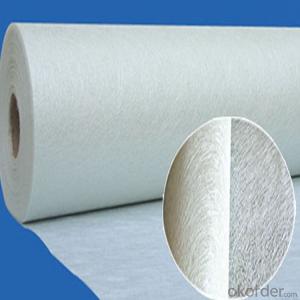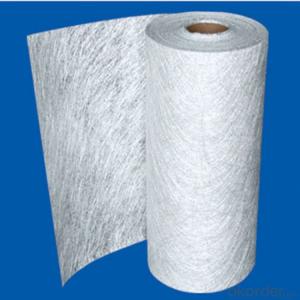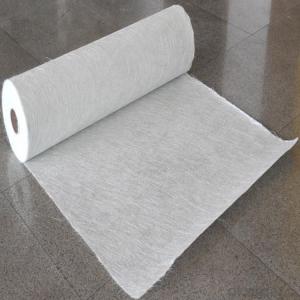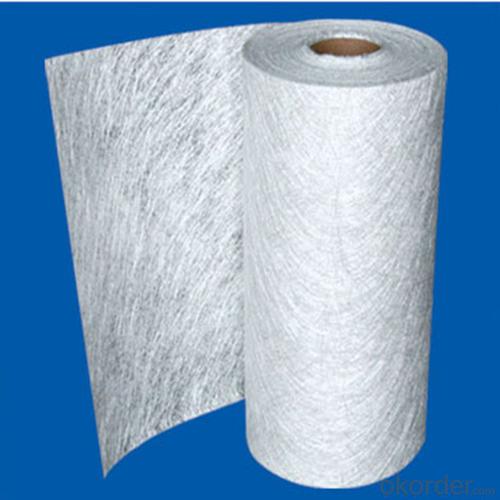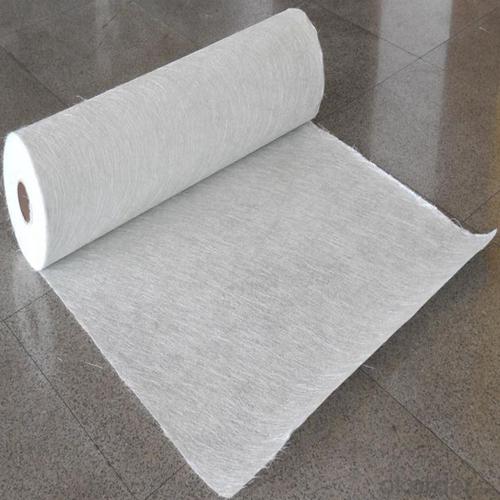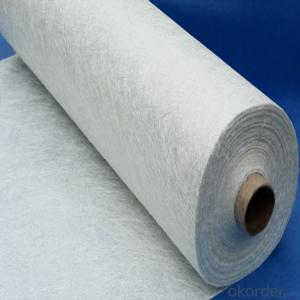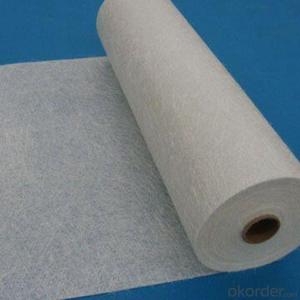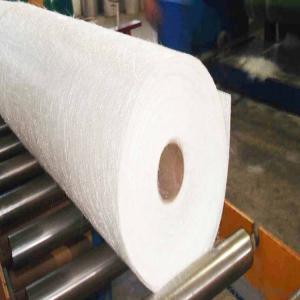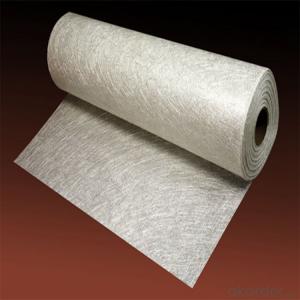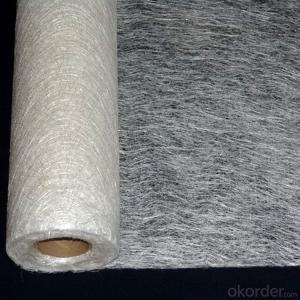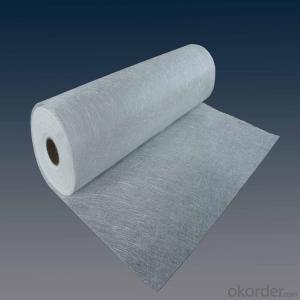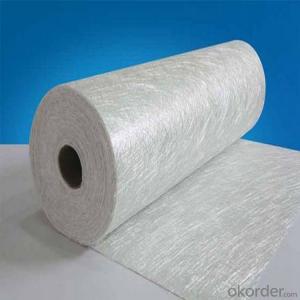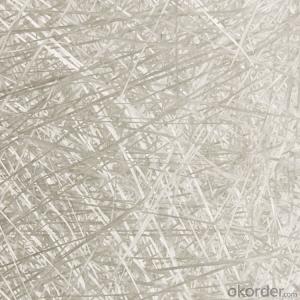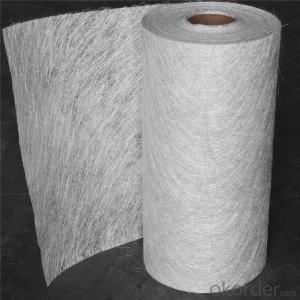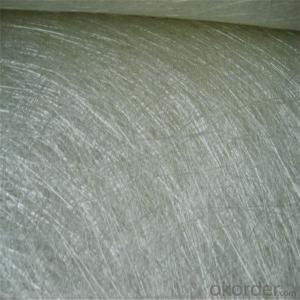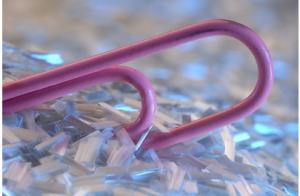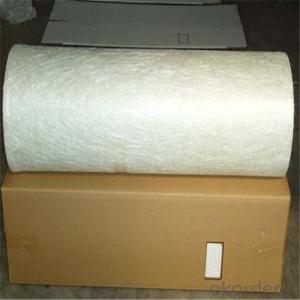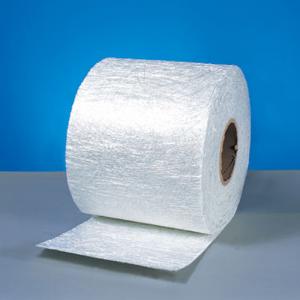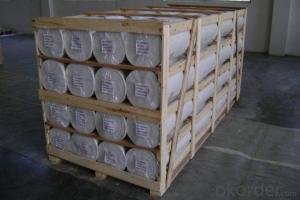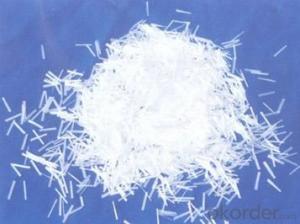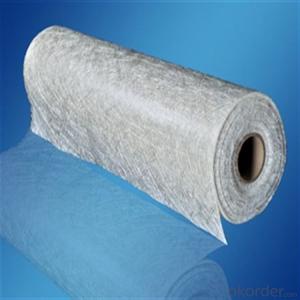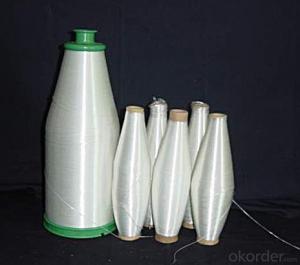Fiberglass Chopped Strands Chopped Strand Mat E-Glass & C-Glass Fiberglass
- Loading Port:
- China main port
- Payment Terms:
- TT OR LC
- Min Order Qty:
- 1 kg
- Supply Capability:
- 5000 kg/month
OKorder Service Pledge
OKorder Financial Service
You Might Also Like

Product Description:
Chopped strand mat is made from chopped glass fibers, which are bonded with powder or emulsion binders. It can be used in hand lay-up process and continuous laminating process to produce FRP products, such as plates, lighting board, hull, bathtub, cooling towers, anti-corrosion materials, vehicles.
Good transparency for the laminates
Rapid wet out
Easy to remove air bubbles
Good dispersion and uniformity
High wet-strength retention
Good mechanical properties
Specifications:
Item | Over Density | Moisture Content | Chop Density | Polyester Yarn | Width |
(g/m2) | (%) | (g/m2) | (g/m2) | (mm) | |
EMK300 | 309.5 | ≤0.15 | 300 | 9.5 | 50-3300 |
EMK380 | 399 | 380 | 19 | ||
EMK450 | 459.5 | 450 | 9.5 | ||
EMK450 | 469 | 450 | 19 | ||
EMC0020 | 620.9 | 601.9 | 19 | ||
EMC0030 | 909.5 | 900 | 9.5 |
Special products are available according to customer’s requirement.
Product Packaging:
Each Surface Tissue is wound onto a paper tube which has an inside diameter of 76mm and the mat roll has a diameter of 330mm. The mat roll is wrapped up with plastic film,and then packed in a cardboard box or wrapped up with kraft paper. The rolls can be vertically or horizontally placed. For transportation, the rolls can be loaded into a cantainer directly or on pallets.
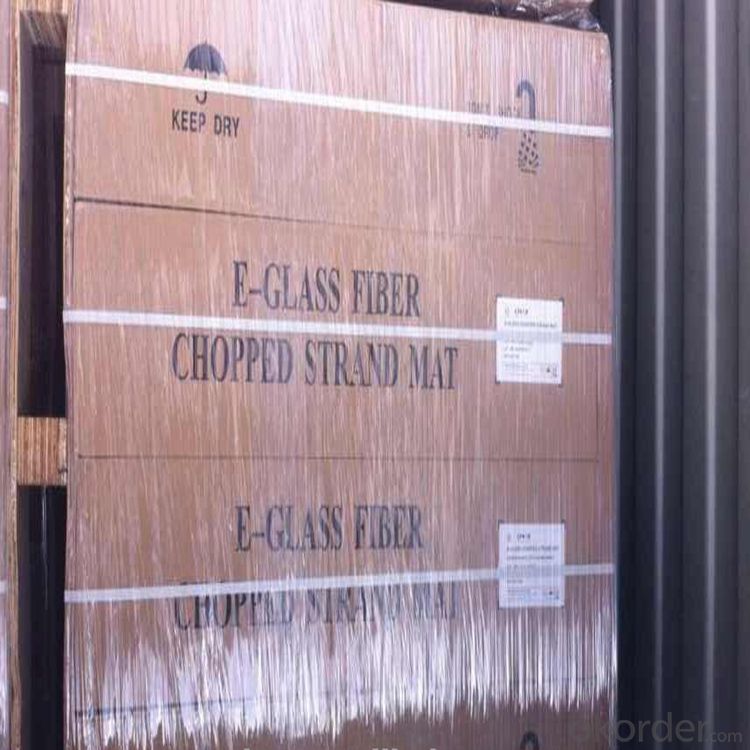
Product Storage:
Unless otherwise specified, Chopped Strand Mat should be stored in a dry, cool and rain-proof area. It is recommended that the room temperature and humidity should be always maintained at 15℃~35℃ and 50%~75% respectively.
Company Information
CNBM (China National Building Material) Group is the largest comprehensive building materials group in China that in integrate scientific research, manufacturing and logistics into one entity. The largest building materials and equipment specialists in China. Upon State Council approval, today CNBM owned more than 300 subordinate manufacturing factories and servicing companies. There are 6 fully owned public listed companies and 11 partially owned with substantial shares public listed companies. In many of these fields, CNBM is playing the leading role in the building industry in the country.

FAQ:
which kind of glass fiber sample and materials can you provide?
We can provide the glass fiber and glass fiber down stream products samples of E glass, C glass, ECR glass, High alkali glass. The products includes single end roving, assembled roving for different applications( Piping, SMC, panel, winding mill plate) , chop strand for BMC, engineering plastic (PA, PPA, PPT, POM, etc), chop strand mat (from 100gsm-900gsm) for automobile and water tank, etc, woven roving (270gsm-800gsm), surface tissue (25-50gsm), multi-axial fabric of different unit weight.
- Q: How does the fiber dispersion affect the surface finish of chopped strand composites?
- Fiber dispersion refers to the distribution and orientation of individual fibers within a composite material. In chopped strand composites, the fibers are randomly distributed and oriented in various directions. The level of fiber dispersion has a significant impact on the surface finish of the final composite product. When the fibers are well dispersed, meaning they are evenly distributed and oriented, the surface finish of the chopped strand composite tends to be smoother and more uniform. This is because the fibers are able to fill the resin matrix more effectively, resulting in a more homogeneous structure. The smooth surface finish is desirable for applications where aesthetics or smoothness is of importance, such as in automotive or consumer products. On the other hand, poor fiber dispersion leads to uneven distribution and orientation of fibers within the composite. This can create areas with high fiber concentration and other areas with low fiber concentration. As a result, the surface finish of the chopped strand composite becomes rougher and more irregular. The presence of fiber clusters or voids can also lead to surface defects such as pitting or waviness. In addition to affecting the surface finish, fiber dispersion also influences the mechanical properties of the composite. Well-dispersed fibers provide better reinforcement, leading to improved strength, stiffness, and impact resistance. On the contrary, poor fiber dispersion may result in weaker areas with reduced mechanical performance. To achieve a desired surface finish in chopped strand composites, it is important to ensure proper fiber dispersion during the manufacturing process. Techniques such as mechanical mixing, spray-up, or injection molding can be employed to enhance fiber dispersion and promote a smooth and uniform surface finish.
- Q: Can fiberglass chopped strand be used in the production of aerospace interiors?
- Yes, fiberglass chopped strand can be used in the production of aerospace interiors. It is commonly used in applications such as insulation, paneling, and reinforcement for lightweight structures.
- Q: Can fiberglass chopped strand be used in the production of insulation boards?
- Yes, fiberglass chopped strand can be used in the production of insulation boards. It is commonly used as a reinforcing material to enhance the strength and durability of insulation boards.
- Q: What is the difference between fiberglass and carbon fiber? ?
- The strength of carbon fiber is higher than that of glass fiber. Carbon fiber is conductive, while glass fiber reinforced plastic is not.
- Q: Can fiberglass chopped strand be used in the production of wind turbine blades?
- Wind turbine blades can benefit from the use of fiberglass chopped strand. This material is commonly utilized in composite manufacturing and brings various advantages to blade production. To begin with, fiberglass chopped strand boasts exceptional tensile strength and stiffness, vital qualities for withstanding the forces and loads experienced by wind turbine blades during operation. By enhancing the blades' structural integrity, it increases their durability and resistance to fatigue. Moreover, fiberglass chopped strand exhibits excellent resistance to corrosion and environmental degradation. This is particularly important for wind turbine blades, which are exposed to diverse weather conditions and elements such as UV radiation, moisture, and temperature fluctuations. Incorporating fiberglass chopped strand into blade construction ensures long-term performance and reliability. Additionally, fiberglass chopped strand is lightweight, a significant benefit for wind turbine blades. The lighter the blades, the easier it becomes for the turbine to capture wind energy and rotate efficiently. Utilizing fiberglass chopped strand reduces the overall weight of the blades while preserving their strength and stiffness. In conclusion, fiberglass chopped strand proves to be a suitable material for wind turbine blade production due to its high tensile strength, corrosion resistance, and lightweight properties. Its utilization contributes to the overall performance, durability, and efficiency of wind turbines, making it the preferred choice in the industry.
- Q: How is the UV resistance of fiberglass chopped strand composites tested?
- The UV resistance of fiberglass chopped strand composites is typically tested through exposure to ultraviolet radiation in a controlled laboratory setting. This involves subjecting the composite material to specific wavelengths and intensities of UV light for a predetermined period of time. The material's performance is then evaluated by assessing any changes in physical properties, such as color fading, surface degradation, or loss of mechanical strength.
- Q: How does the diameter of the chopped strand affect its performance?
- The diameter of the chopped strand can significantly impact its performance. A smaller diameter strand typically results in better dispersion and wet-out in the resin matrix, leading to improved mechanical properties and overall performance of the composite material. Additionally, a smaller diameter strand allows for higher fiber loading, increasing the strength and stiffness of the final product. Conversely, a larger diameter strand may provide better impact resistance but can result in reduced flowability during processing and potentially create voids or weak spots in the composite structure.
- Q: What are the typical flexural strength values of chopped strand composites?
- The flexural strength values of chopped strand composites can differ based on various factors, such as the type of resin matrix, fiber content, fiber orientation, and manufacturing process. Typically, chopped strand composites exhibit flexural strength values ranging from 100 MPa to 400 MPa (14,500 psi to 58,000 psi). In terms of its ability to resist bending or deformation under a load, the flexural strength of a chopped strand composite is crucial in applications where the material experiences bending or flexing forces, like in structural components or automotive parts. The specific flexural strength values can be influenced by the type of fibers utilized, such as glass, carbon, or natural fibers. Glass fibers are commonly used and typically provide a flexural strength ranging from 100 MPa to 200 MPa (14,500 psi to 29,000 psi). On the other hand, carbon fibers offer higher flexural strength values, typically ranging from 200 MPa to 400 MPa (29,000 psi to 58,000 psi), making them suitable for applications requiring high strength and stiffness. It is crucial to note that the actual flexural strength values of chopped strand composites can significantly vary based on the aforementioned factors and manufacturing techniques. Therefore, it is recommended to consult specific material datasheets or conduct testing to determine the precise flexural strength values for a particular chopped strand composite.
- Q: Can fiberglass chopped strand be used in water treatment applications?
- Indeed, water treatment applications can make use of fiberglass chopped strand. With its exceptional resistance to corrosion and chemicals, fiberglass proves to be a versatile material perfectly suited for water treatment procedures. Employing chopped strands of fiberglass allows for the reinforcement of multiple components, including pipes, tanks, and filters, which are essential in water treatment systems. The remarkable strength and durability of fiberglass render it highly capable of enduring the challenging conditions commonly encountered in water treatment facilities. Furthermore, fiberglass is non-toxic and does not release any detrimental substances into the water, guaranteeing the safety of the treated water supply.
- Q: How is fiberglass chopped strand used in the renewable energy sector?
- Fiberglass chopped strand is widely used in the renewable energy sector due to its excellent properties and versatility. It is primarily used in the manufacturing of wind turbine blades, which are a critical component of wind energy systems. The chopped strand is mixed with a resin matrix, usually epoxy or polyester, to form a composite material. This composite is lightweight, yet strong and durable, making it ideal for constructing wind turbine blades. The fiberglass reinforcement enhances the strength and stiffness of the blades, enabling them to withstand the high stresses and loads experienced during operation. Furthermore, fiberglass chopped strand offers excellent corrosion resistance, which is vital in offshore wind farms where turbines are exposed to harsh marine environments. It also possesses excellent electrical insulation properties, ensuring safe and efficient energy transmission. The use of fiberglass chopped strand in wind turbine blades also contributes to the sustainability of the renewable energy sector. Fiberglass is a non-toxic material and can be recycled, reducing the environmental impact of wind turbine blade disposal. Additionally, the lightweight nature of the composite material reduces the overall weight of the blades, enabling more efficient operation and increased energy production. In conclusion, fiberglass chopped strand plays a crucial role in the renewable energy sector by providing a strong, lightweight, and durable material for wind turbine blades. Its excellent properties and recyclability make it an ideal choice for constructing sustainable and efficient wind energy systems.
Send your message to us
Fiberglass Chopped Strands Chopped Strand Mat E-Glass & C-Glass Fiberglass
- Loading Port:
- China main port
- Payment Terms:
- TT OR LC
- Min Order Qty:
- 1 kg
- Supply Capability:
- 5000 kg/month
OKorder Service Pledge
OKorder Financial Service
Similar products
Hot products
Hot Searches
Related keywords
